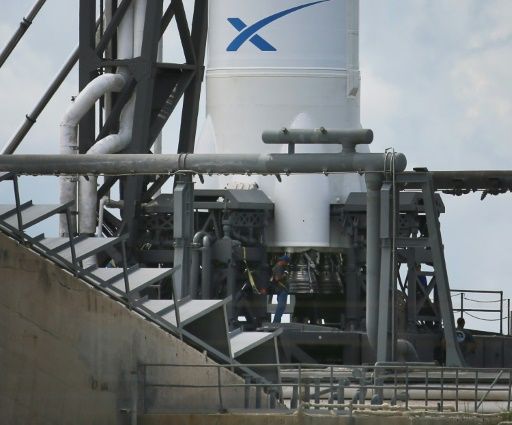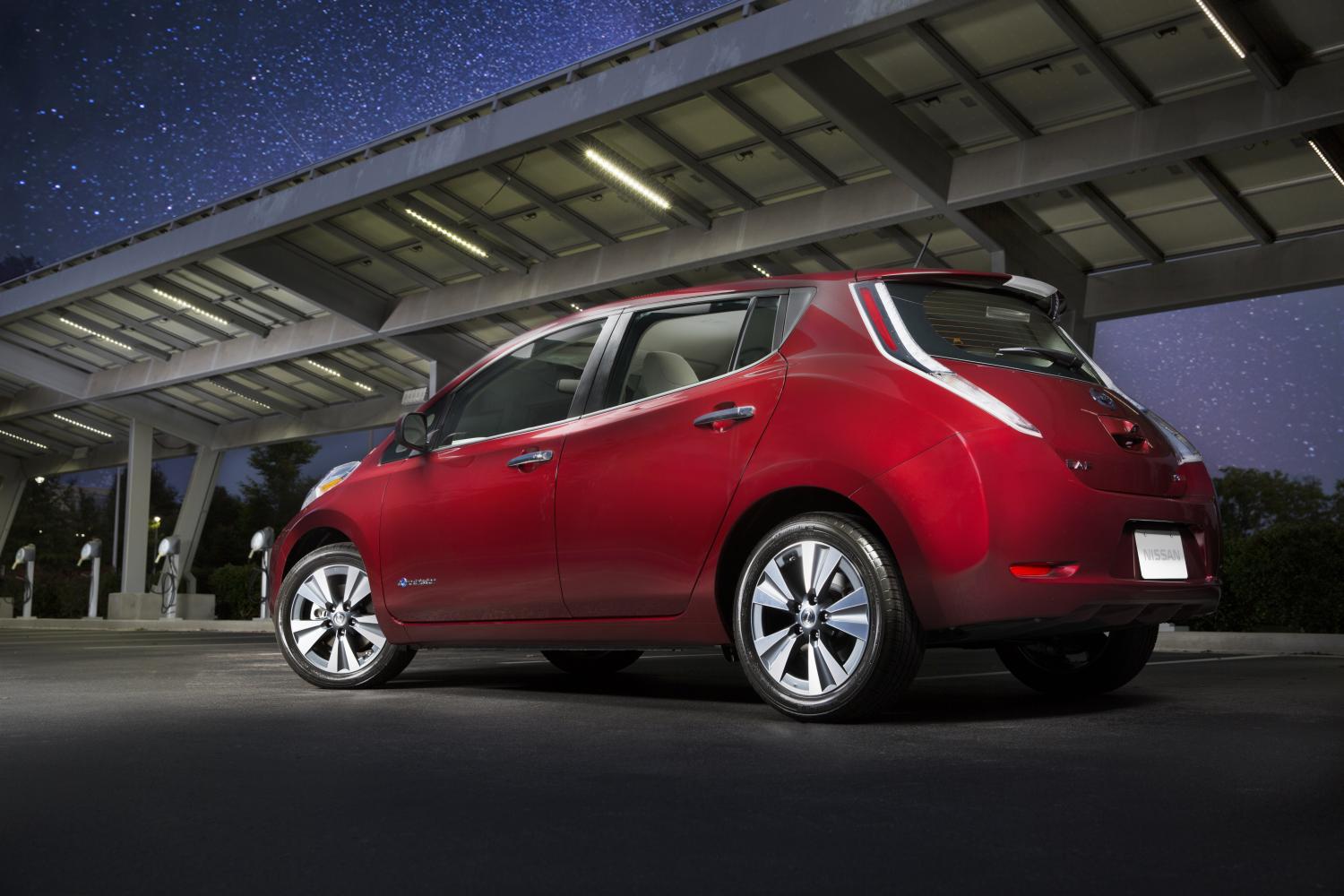Page 10659
Aug 15, 2016
Japan can now beam solar energy from space
Posted by Shailesh Prasad in categories: solar power, space, sustainability
If you think the idea of powering the whole world with solar power is still many years away, prepare to be amazed. The inspired minds at Mitsubishi Heavy Industries has succeeded in transmitting solar energy right through the air. Using wireless power transmission may be the best way to gather solar energy from space in order to use it here on Earth.
Aug 15, 2016
SpaceX lands Falcon 9 rocket after launching Japanese satellite
Posted by Shailesh Prasad in categories: drones, satellites
SpaceX successfully landed a reusable Falcon 9 rocket on a floating drone ship at sea early Sunday after the vehicle had sent a Japanese communications satellite into orbit.
The California-based company’s eighth launch this year was part of its ongoing effort to re-use costly rocket parts instead of jettisoning them into the ocean.
It was also the fourth time SpaceX has vertically landed a used Falcon 9 rocket aboard a floating platform at sea.
Continue reading “SpaceX lands Falcon 9 rocket after launching Japanese satellite” »
Aug 15, 2016
Facebook’s 10-Year Plan: Connectivity, Artificial Intelligence, And Virtual Reality
Posted by Shailesh Prasad in categories: internet, robotics/AI, transportation, virtual reality
Earlier this year at Facebook’s F8 conference, the company revealed three innovation pillars that make up the company’s ten-year vision: connectivity, artificial intelligence (AI), and virtual reality (VR). Facebook’s Chief Technology Officer Mike Schroepfer is responsible for leading each of them. Despite the fact that the vision is ten-years in duration, the company has made significant progress in each.
Facebook’s progress in AI can been seen in everything from the company’s news feed to the way in which people are tagged. The virtual reality innovations are best demonstrated through the Oculus Rift, which I demo’d last Thursday. More recently, the company made a great flight forward on the connectivity pillar as Acquila, a long-endurance plane that will fly above commercial aircraft and the weather, took flight in Arizona. The goal is for this v-shaped aircraft that has a wingspan longer than a Boeing 737, but weighs under 1,o00 pounds to bring basic internet access to the developing world.
I met with Schroepfer at Facebook’s headquarters in Menlo Park, and we discussed these three pillars and a variety of other topics, including the company’s recruiting methods, how the company maintains its innovative edge, and the logic behind its headquarters — one of the largest open-space offices in the world.
Aug 15, 2016
Electric vehicles can meet drivers’ needs enough to replace 90 percent of vehicles now on the road
Posted by Shailesh Prasad in categories: climatology, sustainability
Could existing electric vehicles (EVs), despite their limited driving range, bring about a meaningful reduction in the greenhouse-gas emissions that are causing global climate change? Researchers at MIT have just completed the most comprehensive study yet to address this hotly debated question, and have reached a clear conclusion: Yes, they can.
The study, which found that a wholesale replacement of conventional vehicles with electric ones is possible today and could play a significant role in meeting climate change mitigation goals, was published today in the journal Nature Energy by Jessika Trancik, the Atlantic Richfield Career Development Associate Professor in Energy Studies at MIT’s Institute for Data, Systems, and Society (IDSS), along with graduate student Zachary Needell, postdoc James McNerney, and recent graduate Michael Chang SM ‘15.
“Roughly 90 percent of the personal vehicles on the road daily could be replaced by a low-cost electric vehicle available on the market today, even if the cars can only charge overnight,” Trancik says, “which would more than meet near-term U.S. climate targets for personal vehicle travel.” Overall, when accounting for the emissions today from the power plants that provide the electricity, this would lead to an approximately 30 percent reduction in emissions from transportation. Deeper emissions cuts would be realized if power plants decarbonize over time.
Aug 15, 2016
Google is developing an OS called “Fuchsia,” runs on All the Things
Posted by Shailesh Prasad in categories: computing, mobile phones, transportation
Every single operating system developed by Google to date has one thing in common: they’re based on the Linux kernel. Chrome OS, Android, Chromecasts, you name it. Linux has powered Google hardware for years.
However, the Linux kernel is not ideal for every situation. Especially in the case of embedded devices like car dashboards or GPS units, full-blown desktop kernels like Linux impact performance and cause other issues. There’s a massive ecosystem of operating systems designed for embedded hardware, and Google may be working on their own.
Enter “Fuchsia.” Google’s own description for it on the project’s GitHub page is simply, “Pink + Purple == Fuchsia (a new Operating System)”. Not very revealing, is it? When you begin to dig deeper into Fuchsia’s documentation, everything starts to make a little more sense.
Continue reading “Google is developing an OS called ‘Fuchsia,’ runs on All the Things” »
Aug 15, 2016
Scientists Built a ‘Mini Black Hole’ Out of Sound Waves
Posted by Andreas Matt in category: cosmology
Aug 15, 2016
NASA’s Asteroid Redirect Mission Completes Robotic Design Milestone
Posted by Klaus Baldauf in categories: robotics/AI, space
After completing mission development milestone, the Asteroid Redirect Mission proceeds toward robotic launch in 2021.
Aug 15, 2016
Progress toward real life super-soldiers
Posted by Klaus Baldauf in categories: bioengineering, computing, military
For three years ago U.S. Special Operations Command and DARPA announced they had started work on a super-soldier suit called TALOS (Tactical Assault Light Operator Suit) unlike anything in the history of warfare. It is engineered with full-body ballistics protection; integrated heating and cooling systems; embedded sensors, antennas, and computers; 3D audio (to indicate where a fellow warfighter is by the sound of his voice); optics for vision in various light conditions; life-saving oxygen and hemorrhage controls; and more.
It aims to be “fully functional” by 2018. “I am here to announce that we are building Iron Man,” President Barack Obama said of the suit during a manufacturing innovation event in 2014. When the president said, “This has been a secret project we’ve been working on for a long time,” he wasn’t kidding.
In 1999 DARPA created the Defense Sciences Office (DSO) and made Michael Goldblatt its director. Goldblatt saw the creation of the super-soldier as imperative to 21st-century warfare.
Continue reading “Progress toward real life super-soldiers” »
What will be most interesting about the next 15 years is that unlike the last 15, which was largely defined by digital technology, the advancements to come will arise from the confluence of a number of fields.
Exponentially more powerful computing architectures will make it possible for us to work at the genomic and molecular levels and create intelligent machines. New sources of energy, as well as the ability to store that energy far more efficiently, will allow these technologies to be practical, safe and affordable.
Today, in 2016, we have largely mastered the virtual world of information. By 2031, we will have begun to master the physical world as well.


















